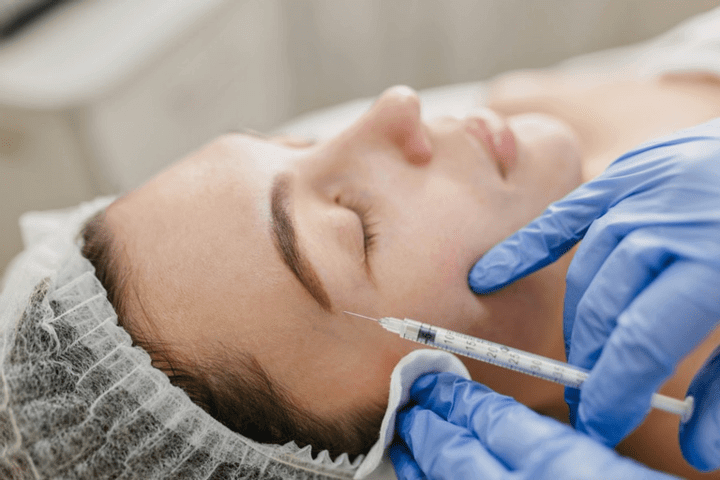While Botox is often associated with its cosmetic applications, what many don’t know is that it actually started as a treatment for strabismus, a condition involving the eye muscles. It was soon found to have uses in other areas of medicine, including to stop excess sweating, help with TMJ pain, help ease migraine pain, and to prevent migraine headaches. So, if you suffer from chronic migraines, consider Botox injections for migraines as treatment. In some cases, insurance will cover the cost, at least in part. Dr. Fisher does not accept insurance for Botox and does not do Botox specifically for the medical treatment of migraine headaches have no side effects.
- Does Botox for migraines also help with wrinkles?
- Where do they inject Botox for migraine?
- What kind of Botox is used for migraines?
What is Botox, and How can it help with Migraines?
Botox is botulinum toxin. It is a type of bacteria-produced toxin, injected in minuscule, safe amounts. It works by preventing the release of acetylcholine, a neurotransmitter that carries pain signals.
Who is a Good Candidate for Botox for Migraines?
Botox is a viable option for chronic migraines. To qualify as chronic, headaches should be experienced 15 days a month, and of those, at least 8 should be migraine headaches. This should have occurred for over 3 months to be classified as chronic migraines. The patient should also be over 18 years of age.
What is the Procedure like?
Getting Botox is a fairly quick and easy process. The entire appointment should last about 20 minutes. Topical anesthesia is often placed to minimize pain from the injections. The doctor injects the Botox along the forehead in several places. They may also inject some along the neck if migraine pain is felt there as well. Side effects are usually mild and go away within about 48 hours.
How long does it take for Botox to help Migraines?
Most people need two appointments for Botox injections, 12 weeks apart, before they begin to see improvement in the number of migraines they get each month. Some may see improvements as early as 4 weeks after their first injections. Injections should be administered every 12 weeks to ensure continuous results.
To read more about health and wellness issues, check out our blog section here.




